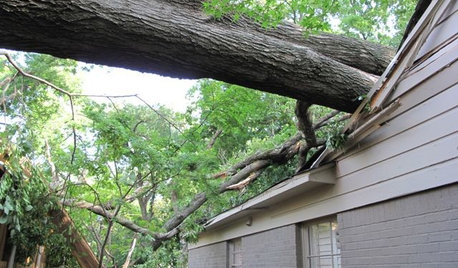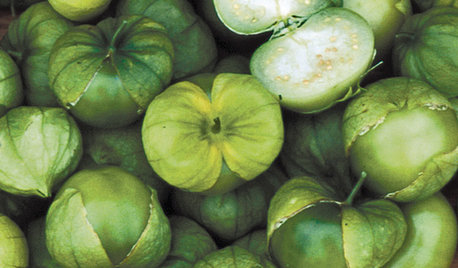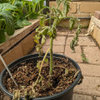Tomato leaf damage
lifemega
17 years ago
Related Stories

EDIBLE GARDENSSummer Crops: How to Grow Tomatoes
Plant tomato seedlings in spring for one of the best tastes of summer, fresh from your backyard
Full Story
ARCHITECTUREHouzz Tour: Fresh Ideas in a Former Tomato Packing Shed
A formerly metal-clad structure is now a beautiful wood home designed to capture the light and preserve open space
Full Story
GARDENING GUIDESGot Frost-Damaged Plants? How It Happens, and When and How to Prune
Crispy brown leaves are a sure sign that Jack Frost has been to your neighborhood
Full Story
HOUZZ TOURSMy Houzz: Twister Damage Sparks a Whole Ranch Remodel
A Dallas couple transforms their traditional rambler into a bright, family-centered haven after a tornado
Full Story
TRAVEL BY DESIGNHouzz TV: Take a Leaf-Peeping Road Trip in New England
Ride along with a Houzz contributing photographer to see gorgeous autumn eye candy from New York to New Hampshire
Full Story
SUMMER FRUITS AND VEGETABLESSummer Crops: How to Grow Tomatillos
Grow this Mexican native for the freshest salsa verde — and for fewer problems than its tomato cousins
Full Story0

MONTHLY HOME CHECKLISTSYour Fall Home Maintenance Checklist
Prep your house and yard for cold weather with this list of things to do in an hour or over a weekend
Full Story
GARDENING GUIDESSouthwest Gardener's July Checklist
Hold on to your hat and prune those tree branches; monsoon season means damage prevention is key
Full Story
HOUSEKEEPINGHow to Clean Marble Countertops and Tile
Acidic solutions can damage your marble surfaces. Here’s how to keep marble looking clean and amazing
Full Story
HOUSEKEEPINGHow to Clean Your Cookware So It Lasts
Avoid damage during everyday cleaning and stain scrubbing, with these tips for pots and pans made of popular materials
Full Story






bcday
lifemegaOriginal Author
Related Professionals
Windham Landscape Architects & Landscape Designers · Maple Valley Landscape Architects & Landscape Designers · Ferndale Landscape Architects & Landscape Designers · Kyle Landscape Architects & Landscape Designers · Stamford Landscape Contractors · Aloha Landscape Contractors · Darien Landscape Contractors · Mashpee Landscape Contractors · Riverhead Landscape Contractors · Wanaque Landscape Contractors · Agoura Siding & Exteriors · Castle Rock Siding & Exteriors · Fairfax Siding & Exteriors · Kirkland Siding & Exteriors · Woodland Hills Siding & ExteriorsMrsJustice
yoshithetomatolover
srburk